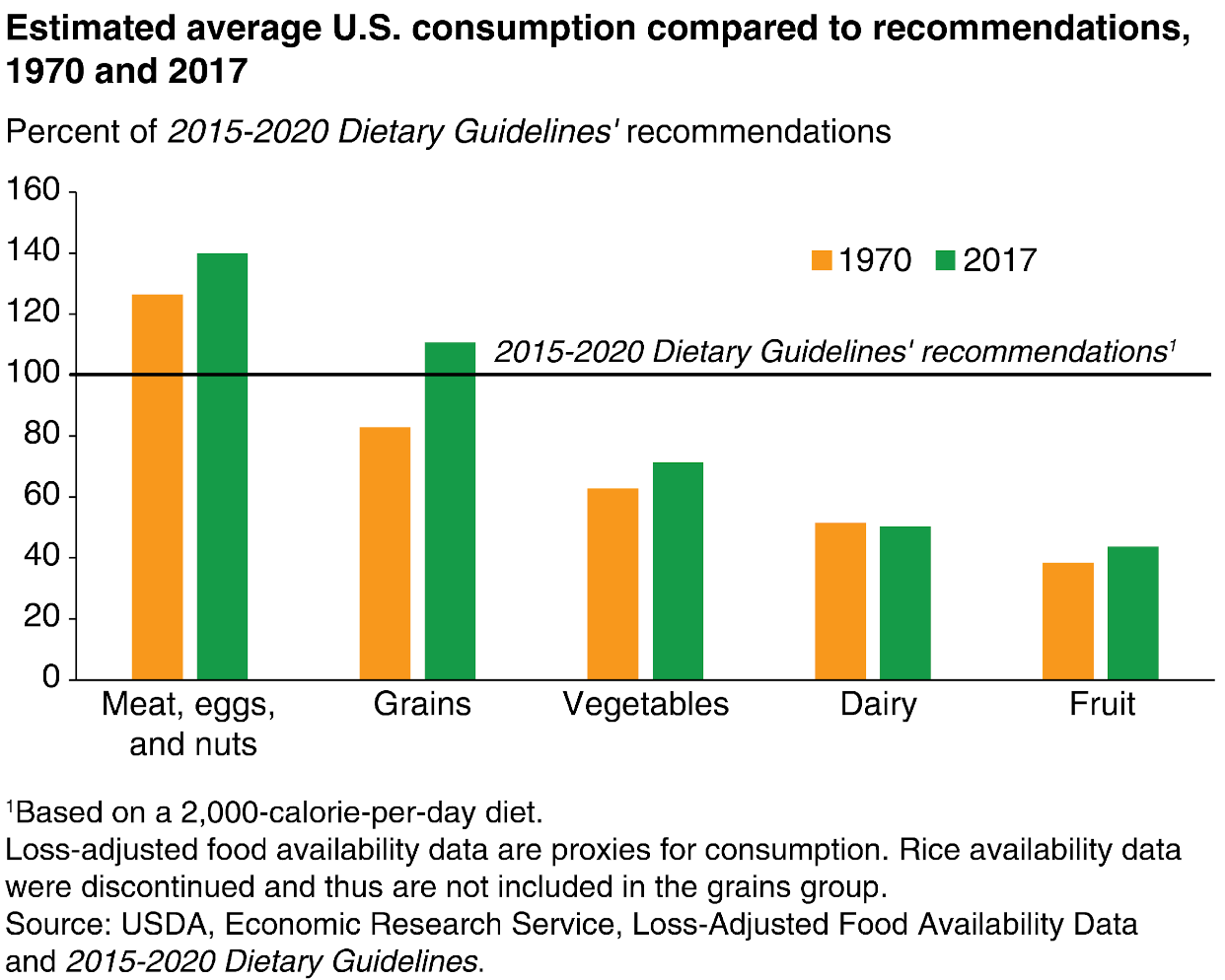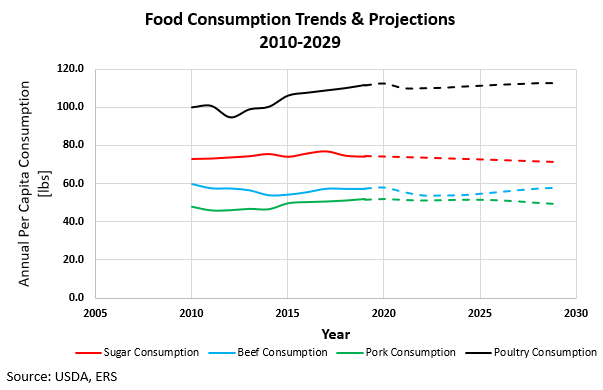Every five years since 1980, the USDA updates the dietary guidelines which are primarily used by health professionals and nutritionists for the general public aged two and above. These guidelines inform nutrition programs, health policies, and more. Much of the guidelines have remained the same over the years, such as recommending increasing consumption of vegetables, fruits, legumes, whole grains, low- or non-fat dairy, lean meat, and poultry. However, this year’s suggested dietary guideline update includes a few notable changes including:
- Adding nutritional recommendations for every life-stage.
- A further reduction in added-sugar consumption.
- Children under 2 should avoid sugar-sweetened beverages (SSB).
- All Americans will be urged to reduce intake of added sugars from 10% to 6% of total caloric intake.
As shown in Figure 1, below, most Americans fall short of meeting recommended dietary guidelines. In general, we do not consume enough vegetables, fruits, dairy, and oils, while also exceeding the recommended intake of grains, proteins, added sugars, saturated fats, and sodium. These findings are concerning because many Americans suffer from preventable chronic diseases related to poor diet quality.
Figure 1 Estimated average U.S. consumption compared to recommendations, 1970 and 2017

USDA projections show that some changes are likely in per capita consumption of beef, pork, poultry, and sugars as shown in Figure 2. Total meat consumption is set to slightly increase. This could be driven in part due to low feed costs and strong demand for animal protein. Sugar consumption is projected to gradually decline over the foreseeable future. This could potentially be due to the influence of dietary guidelines or increased use of sugar substitutes.
Figure 2 Food Consumption Trends & Projections 2010- 2029

If American eating habits change to fall more in line with dietary guidelines, this could have notable impacts on U.S. agriculture. In 2017 the U.S. had 396 million acres devoted to crop land. Previous USDA reports have shown that increases in domestic crop acreage planted would need to occur in order to meet fruit, vegetable, and whole-grain consumption recommendations. Assuming export levels do not change and similar eating habits to those developed in the USDA report, an additional 8.4 million acres of cropland for domestic production would be needed. This translates to an approximately 2% increase in total cropland in the U.S. Additionally, to meet the dairy guidelines, consumption of milk and milk products would need to increase by over 50%. Such demand would require an increase in the number of cows, feed grains, and possibly acreage devoted to dairy.
The USDA guidelines play a pivotal role in leading Americans towards healthier diets. As eating habits continue to evolve, our agricultural systems will need to adapt to satisfy varying consumer demands. The USDA is accepting public comments through August 13, 2020 (Visit link here). Public comments and the scientific report released by the Advisory committee will be considered for the final release of the 2020-2025 dietary guidelines.

